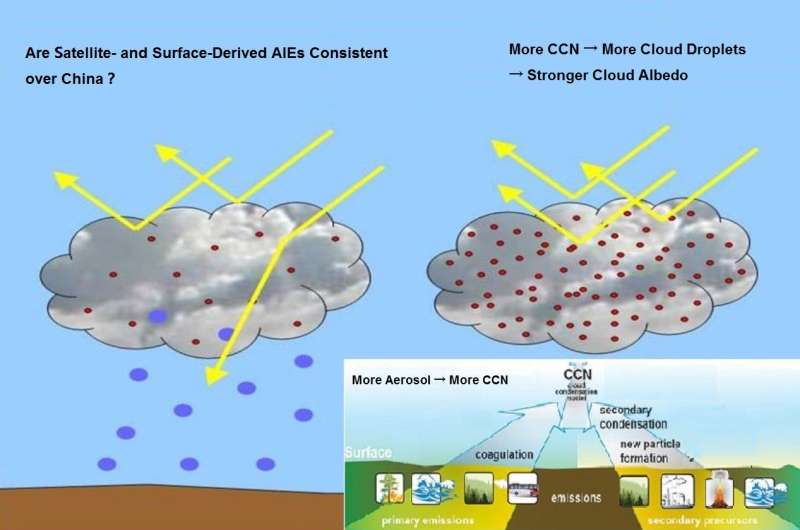First surface-based estimation of the aerosol indirect effect over China

The aerosol indirect effect (AIE) can significantly affect climate change and is one of the largest uncertainties in climate change studies. To date, only a few AIE studies using satellite measurements have been carried out in China, and no such study has been done using ground-based measurements. The AIE can only be assessed accurately from aircraft or ground-based measurements. The first comprehensive investigation into the AIE over this polluted region based upon extensive ground-based measurements has now been reported in Advances in Atmospheric Sciences.
The authors of the paper, Dr. Jianjun LIU and Prof. Zhanqing LI, from the Earth System Science Interdisciplinary Center of the University of Maryland, U.S., began by investigating the AIE over the polluted region of southeastern China, based on extensive measurements of clouds, aerosols, radiative properties, and meteorological factors, during the Atmospheric Radiation Measurement Mobile Facility experimental campaign in China. They found significant AIEs observed by the surface-based measurements; however, the AIEs studied based on satellite measurements had large uncertainties over this region because of some inherent limitations.
Next, the authors examined the influence of aerosols on cloud microphysical properties and the diurnal cycle of cloud properties. Dr. Jianjun LIU says, "The aerosols significantly affected the cloud microphysical properties based on the surface-based measurements. The relationship between the CER [cloud droplet effective radius] and AI [aerosol index] is very weak in summer because the cloud droplet growth is least affected by the competition for water vapor. The sensitivities of CER and LWP [liquid water path] to aerosol loading increases are not significantly different under different air mass conditions. There is a significant correlation between the changes in hourly mean AI and the changes in hourly mean CER, LWP and COD. The calculated AIEs based on two cloud parameters are similar in magnitude and close to the typical FIE [first indirect effect] value of ~0.23. The satellite-derived FIE is contrary to the FIE estimated from surface retrievals and may have large uncertainties due to some inherent limitations."
Prof. Zhanqing LI goes on to say that "the use of ground-based measurements is one of the important approaches to quantify the magnitude of the AIE and investigate the underlying mechanisms."
More information: Jianjun Liu et al, First surface-based estimation of the aerosol indirect effect over a site in southeastern China, Advances in Atmospheric Sciences (2018). DOI: 10.1007/s00376-017-7106-2
Provided by Chinese Academy of Sciences




















